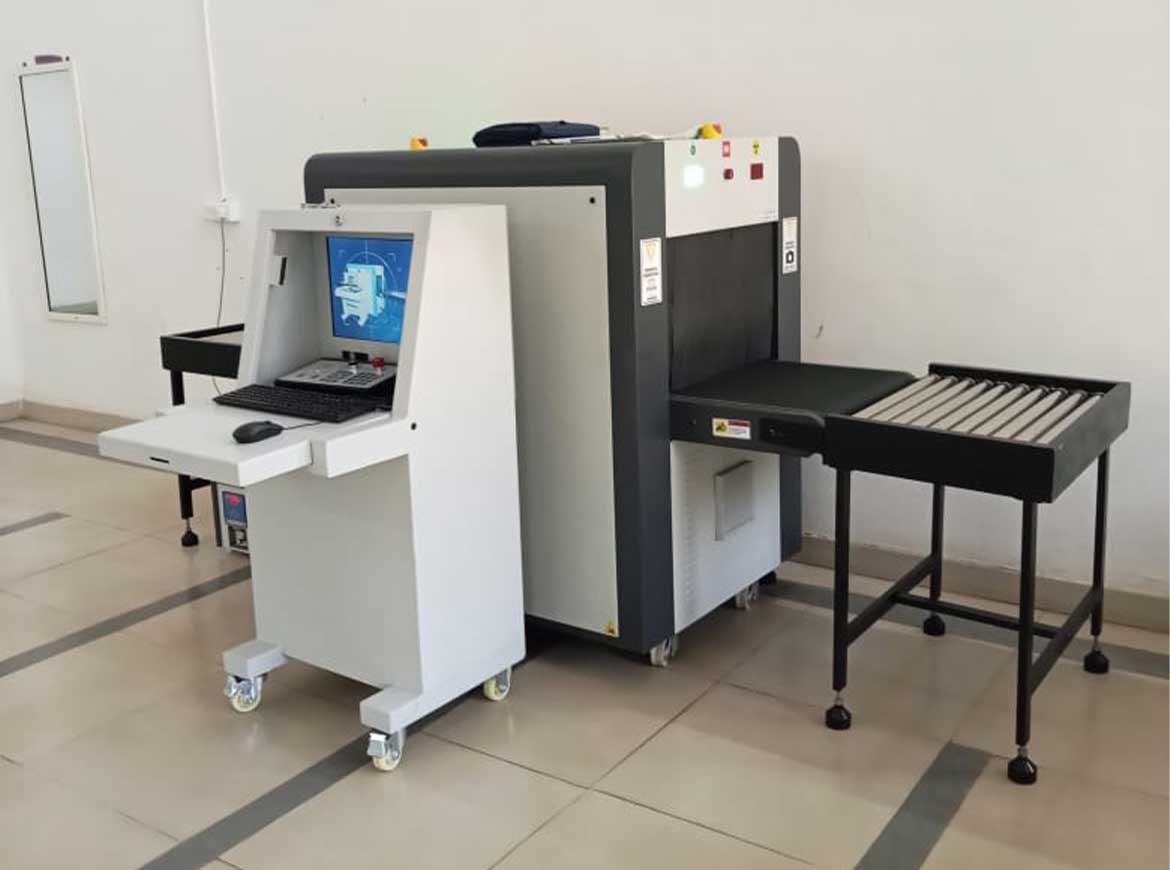- info@gujarindustries.co.in
- Pune - 411062, Maharastra, India
The Role of AI and Machine Learning in Modern X-Ray Baggage Scanners for Enhanced Security
In today’s rapidly evolving world of security, X-ray baggage scanners have become crucial tools for ensuring the safety of public spaces, airports, and transportation hubs. As technology advances, so does the capability of these scanners. The integration of Artificial Intelligence (AI) and Machine Learning (ML) is revolutionizing the way baggage scanners work, enhancing both speed and accuracy in detecting potential threats. Let's explore how AI and ML are transforming modern X-ray baggage scanners.
-
1. Improved Detection Accuracy
Traditional X-ray systems have always been effective at detecting hazardous items in luggage, but they often require human operators to analyze complex images. AI and machine learning models can be trained to instantly identify patterns and anomalies within X-ray images. This helps improve the detection rate for weapons, explosives, and other dangerous objects that might go unnoticed by the human eye. Machine learning algorithms enhance the scanning process by continuously learning from each new image, ensuring more accurate and reliable results.
2. Faster Processing TimeSpeed is essential in high-traffic environments like airports. AI and machine learning algorithms process baggage X-ray scans much faster than manual analysis by security staff. This not only reduces waiting times but also increases the efficiency of security operations. As a result, travelers experience smoother and quicker security checks, and security personnel can focus on more complex tasks that require human intervention.
-
3. Real-Time Threat Detection:
One of the most significant advantages of incorporating AI and ML in baggage scanners is real-time threat detection. These advanced systems can flag potential threats as soon as they are detected in the scan, alerting security personnel immediately. Machine learning systems can recognize even the smallest inconsistencies, such as hidden explosives or unusual objects, with far greater precision than traditional scanning methods.
4. Enhanced Image Interpretation:AI-based algorithms are capable of analyzing X-ray images in greater detail. These systems can distinguish between benign items and potentially dangerous objects based on their size, shape, and density. For example, AI can differentiate between food items and suspicious packages, providing more accurate interpretations of what’s inside a bag. This leads to fewer false positives, reducing the need for unnecessary manual inspection, and speeding up the entire process.
5. Automated Threat Classification:AI and machine learning technologies enable automated threat classification. When suspicious items are detected, the system categorizes them and assesses their potential danger level. This classification process not only saves time but also ensures that the appropriate action is taken, whether it be additional screening or further investigation. Automated classification also helps to minimize human error, as operators do not need to manually analyze every X-ray image.
A key feature of machine learning is its ability to continually improve over time. As more baggage passes through scanners and more data is gathered, AI and ML algorithms learn from each scan. This continuous learning process allows the system to adapt to new threat patterns and objects that may have been previously unrecognized. Over time, this results in a more robust and reliable security system.
7. Cost Efficiency and Scalability:Integrating AI and machine learning into baggage scanners can lead to significant cost savings in the long term. By automating detection processes, airports and security agencies can reduce labor costs while increasing operational efficiency. Furthermore, AI and ML solutions can scale easily, allowing security measures to be enhanced without requiring significant infrastructure upgrades.
8. Reduced Human Error and Operator Fatigue:Human error is a common issue in security screenings, particularly when operators have to manually interpret large numbers of X-ray images. AI and machine learning help mitigate this problem by automating much of the process, ensuring consistency and reducing fatigue-related mistakes. This not only increases security but also helps maintain the quality of the screening process over time.
9. Integration with Other Security Systems:Human error is a common issue in security screenings, particularly when operators have to manually interpret large numbers of X-ray images. AI and machine learning help mitigate this problem by automating much of the process, ensuring consistency and reducing fatigue-related mistakes. This not only increases security but also helps maintain the quality of the screening process over time.
10. Future Prospects of AI and ML in X-Ray Baggage Scanning:As AI and ML technologies continue to evolve, their potential in X-ray baggage scanning will only grow. We can expect further improvements in threat detection, system accuracy, and the speed of image analysis. Future innovations may lead to fully autonomous security systems that can predict and prevent threats before they even occur.
Conclusion
AI and machine learning are reshaping the landscape of baggage scanning technology, making modern X-ray systems more accurate, faster, and efficient. These innovations help security personnel detect threats in real time, reduce human error, and provide an enhanced experience for travelers. As technology continues to advance, AI and ML will play an even more prominent role in ensuring the safety and security of public spaces worldwide.
By leveraging these cutting-edge technologies, airports and security agencies can better address the challenges of modern-day security threats while improving operational efficiency. The role of AI and ML in baggage scanners is no longer a futuristic concept but an essential part of the security infrastructure of today.

